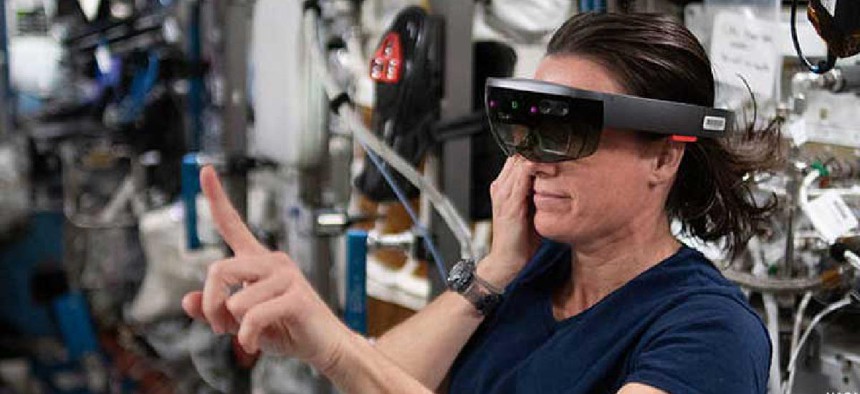NASA leans into AR to give astronauts more autonomy


Connecting state and local government leaders
Augmented reality tools will help astronauts inspect and maintain equipment without help from mission control.
NASA has developed an augmented reality application so astronauts can inspect and maintain equipment on the International Space Station without assistance from mission control in Houston.
Using Microsoft’s HoloLens with custom-built AR software, the T2 Augmented Reality project is expected to limit the impact of communication delays between ISS crew members and NASA’s Johnson Space Center. Even though these delays are largely unnoticeable, NASA wants to increase astronauts’ autonomy as it makes plans to explore the Moon and eventually Mars.
“AR tools hold the promise of allowing us to pre-package guidance and expertise,” ISS Associate Scientist Bryan Dansberry said. “The space station is the perfect platform to test out AR systems and refine these tools so they will be ready when future astronauts need them.”
The AR technology will display the procedure instructions in the goggles and direct the astronaut’s gaze with 3D cues, showing them the proper work sites. The T2AR can also follow verbal instructions, assisting the user with the appropriate AR cues and overlaying supplemental information like instructional videos as they perform the procedures.
Although Microsoft’s HoloLens has been used by NASA since 2016, the first T2AR experiment in orbit was conducted in April when an astronaut was asked to conduct maintenance on the T2 Treadmill, a piece of exercise equipment.
Normally, instructions would be provided on a PDF viewed on a computer or tablet, which can be hard to hold in a tight space while operating on other machinery. However, with the AR technology, all the information regarding the procedure was in plain sight for the astronaut’s reference. Furthermore, no communication between the user and mission control was necessary.
Since this first experiment, two more ISS astronauts have used the AR application, and nine more test sessions are in the works. Though all of the current demonstrations are still limited to the T2 Treadmill, the AR platform is designed to be useful for a wide range of space station needs. Moreover, this technology could have an impact on the ground as well.
“Closer to home, these tests help to mature software and AR technology now so expertise and support are available in remote locations around the world,” Danberry said.
NEXT STORY: Ohio opens smart mobility corridor




